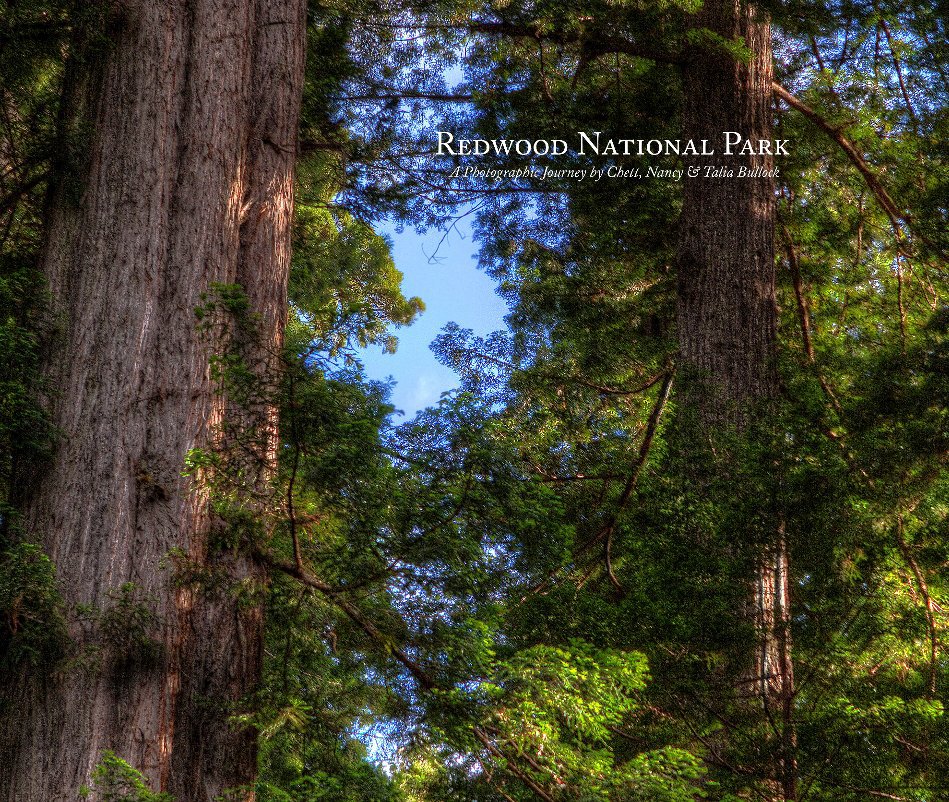Redwood National Park
The Land and It's People
von Chett, Nancy and Talia Bullock
Dies ist der Preis, den Ihre Kunden sehen. Listenpreis bearbeiten
Über das Buch
Redwood National and State Parks are located in northernmost coastal California, and are home to some of the world's tallest trees: old-growth coast redwoods. They grow to over 300 feet tall. Mature Coast redwoods live an average of 500–700 years and a few are documented to be 2,000 years old, making them some of the longest-living organisms on earth. Spruce, hemlock, Douglas-fir, berry bushes, and sword ferns create a multiple-canopied understory. Redwood Park’s mosaic of habitats includes prairie/oak woodlands, mighty rivers and streams, and 37 miles of pristine Pacific coastline. Redwoods are highly resistant to disease, due to a thick protective bark and high tannin content. Redwoods prefer sheltered slopes, slightly inland and near water sources such as rivers and streams.
The diversity of ecosystems allows a variety of wildlife to live in Redwood National and State Parks. Marine mammals such as sea lions and gray whales are among the most visible wildlife and visitors are also likely to see Roosevelt elk browsing in the prairies. Pelicans, ospreys, and gulls are frequently spotted as well.
Redwood trees develop enormous limbs that accumulate deep organic soils and can support tree-sized trunks growing on them. This typically occurs above 150 feet. Scientists have recently discovered that plants which normally grow on the forest floor also grow in these soils, well above ground. The soil mats provide homes to invertebrates, mollusks, earthworms, and salamanders. During drought seasons, some treetops die back, but the trees do not die outright. Instead, redwoods have developed mechanisms to regrow new trunks from other limbs. These secondary trunks, called reiterations, also develop root systems in the accumulated soils at their bases. This helps transport water to the highest reaches of the trees. Coastal fog also provides up to one-third of their annual water needs.
The diversity of ecosystems allows a variety of wildlife to live in Redwood National and State Parks. Marine mammals such as sea lions and gray whales are among the most visible wildlife and visitors are also likely to see Roosevelt elk browsing in the prairies. Pelicans, ospreys, and gulls are frequently spotted as well.
Redwood trees develop enormous limbs that accumulate deep organic soils and can support tree-sized trunks growing on them. This typically occurs above 150 feet. Scientists have recently discovered that plants which normally grow on the forest floor also grow in these soils, well above ground. The soil mats provide homes to invertebrates, mollusks, earthworms, and salamanders. During drought seasons, some treetops die back, but the trees do not die outright. Instead, redwoods have developed mechanisms to regrow new trunks from other limbs. These secondary trunks, called reiterations, also develop root systems in the accumulated soils at their bases. This helps transport water to the highest reaches of the trees. Coastal fog also provides up to one-third of their annual water needs.
Eigenschaften und Details
- Hauptkategorie: Kunstfotografie
-
Projektoption: Querformat groß, 33×28 cm
Seitenanzahl: 240 - Veröffentlichungsdatum: Sept. 24, 2013
- Sprache English
- Schlüsselwörter Yurok Indians, California Parks, Redwood National Forest, National Park, Redwoods National & State Parks, Redwood
Mehr anzeigen
Über den Autor
Chett K Bullock
Chino Valley, Arizona, USA
Graduated top in his class from Brooks Institute of Photography with a Bachelors in Illustrative Advertizing in Professional Photography.


